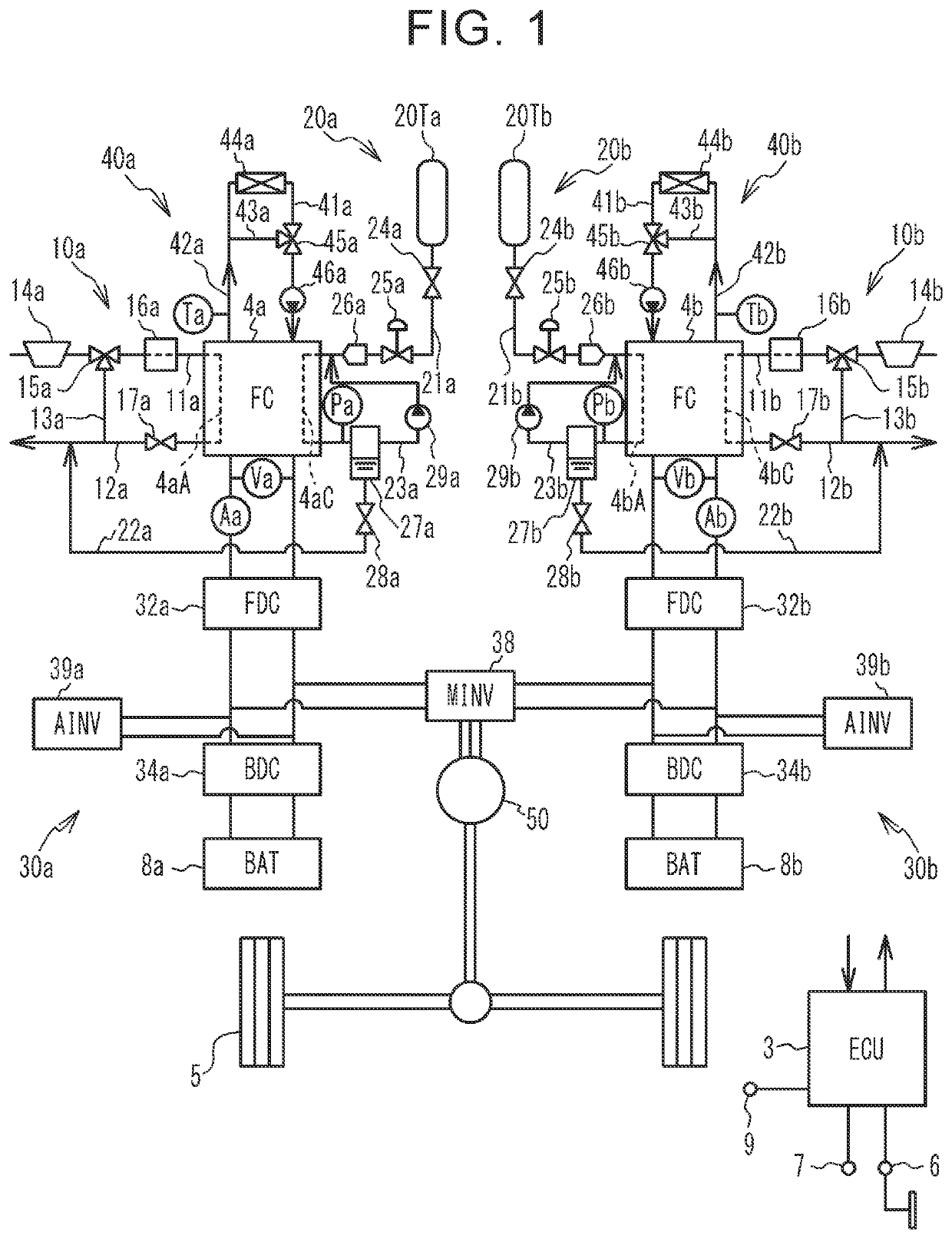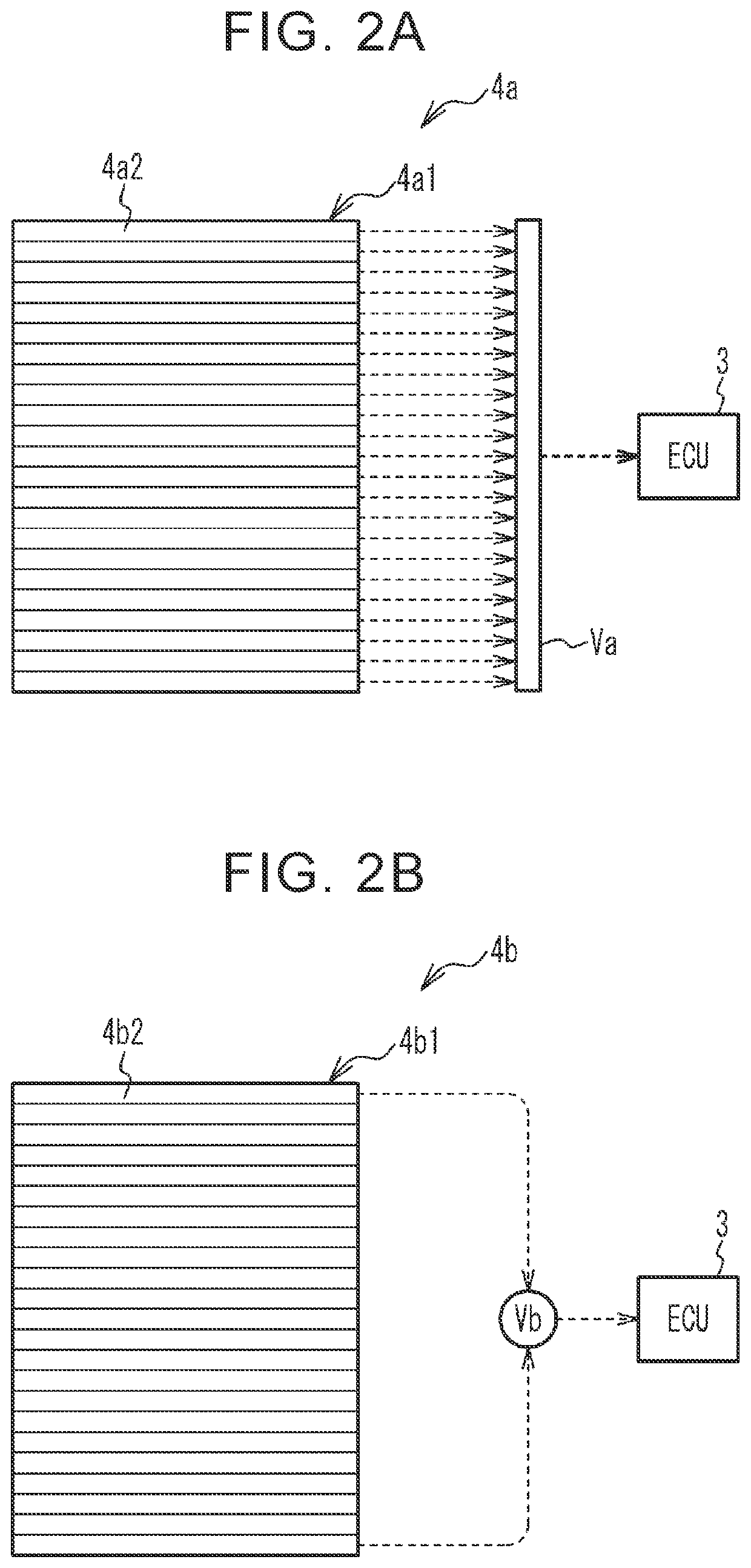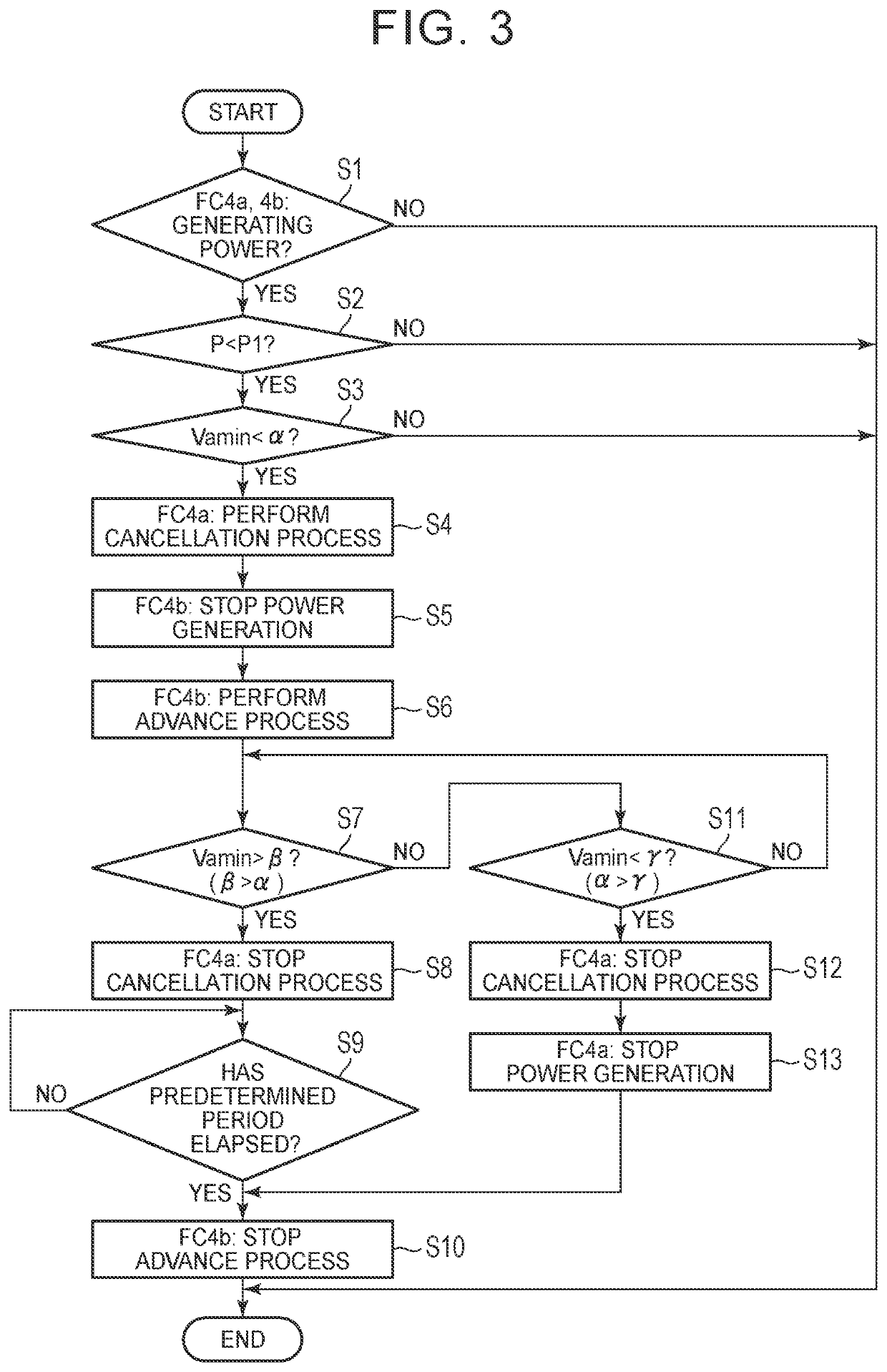Fuel cell system
- Summary
- Abstract
- Description
- Claims
- Application Information
AI Technical Summary
Benefits of technology
Problems solved by technology
Method used
Image
Examples
third modified example
of Fuel Deficiency Cancellation Control
[0087]FIG. 6 is a flowchart showing a third modified example of fuel deficiency cancellation control. The ECU 3 determines whether requests for start of power generation are generated to the FC 4a and the FC 4b (step S1a). The case where the requests for start of power generation are generated to both of the FC 4a and the FC 4b is, more specifically, the case where requests for start of power generation are generated to both of the FC 4a and the FC 4b, in a condition where power generation is stopped in both of the FC 4a and the FC 4b. For example, power generation is stopped in the FC 4a and the FC 4b immediately after the ignition switch 7 is switched from OFF to ON, and the FC 4a and the FC 4b are requested to start generating electric power. Also, in a system in which power generation of both of the FC 4a and the FC 4b are temporarily stopped when the vehicle is temporarily stopped, when the accelerator pedal is operated in this condition, ...
first modified example
of Voltage Sensors
[0098]FIG. 7A and FIG. 7B show a first modified example of voltage sensors. FIG. 7A shows a part of a voltage sensor Vaa, and FIG. 7B shows a part of a voltage sensor Vba. The voltage sensor Vaa detects a voltage for every two unit cells, with respect to all unit cells 4a2 of the FC 4a. Namely, the number of detection channels of the voltage sensor Vaa is one half of the total number of the stacked unit cells 4a2. On the other hand, the voltage sensor Vba detects a voltage for every four unit cells, with respect to all unit cells 4b2 of the FC 4b. Accordingly, the number of detection channels of the voltage sensor Vba is one-fourth of the total number of the stacked unit cells 4b2. In this case, too, the number of detection channels of the voltage sensor Vba is smaller than that of the voltage sensor Vaa, and thus, the manufacturing cost of the voltage sensor Vba is lower than that of the voltage sensor Vaa. Accordingly, the manufacturing cost is reduced, as compar...
second modified example
of Voltage Sensors
[0101]FIG. 8A and FIG. 8B show a second modified example of voltage sensors. A voltage sensor Vab detects a voltage for each unit cell, with respect to a part of the unit cells 4a2, and detects a voltage for every two unit cells, with respect to another part of the unit cells 4a2. A voltage sensor Vbb detects a voltage for every two unit cells, with respect to a part of the unit cells 4b2, and detects a voltage for every four unit cells, with respect to another part of the unit cells 4b2. In this case too, the voltage sensor Vab may detect a voltage of the unit cells 4a2 for every “N” unit cells on average over the whole FC 4a, and the voltage sensor Vbb may detect a voltage of the whole FC 4b, or a voltage of the unit cells 4b2 for every “M” unit cells on average over the whole FC 4b, where “M” is larger than “N”. In this case, the manufacturing cost of the voltage sensor Vbb is lower than that of the voltage sensor Vab.
[0102]In the above case, in steps S3, S7, an...
PUM
 Login to View More
Login to View More Abstract
Description
Claims
Application Information
 Login to View More
Login to View More - R&D
- Intellectual Property
- Life Sciences
- Materials
- Tech Scout
- Unparalleled Data Quality
- Higher Quality Content
- 60% Fewer Hallucinations
Browse by: Latest US Patents, China's latest patents, Technical Efficacy Thesaurus, Application Domain, Technology Topic, Popular Technical Reports.
© 2025 PatSnap. All rights reserved.Legal|Privacy policy|Modern Slavery Act Transparency Statement|Sitemap|About US| Contact US: help@patsnap.com



